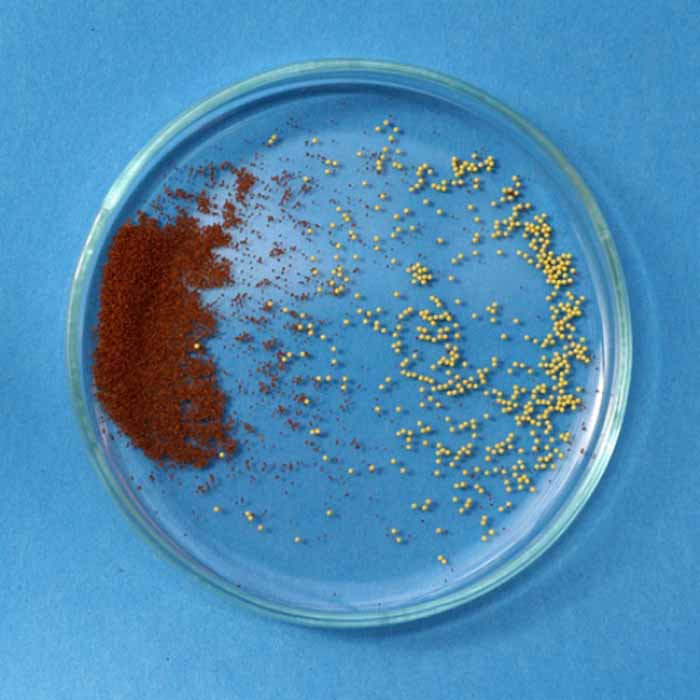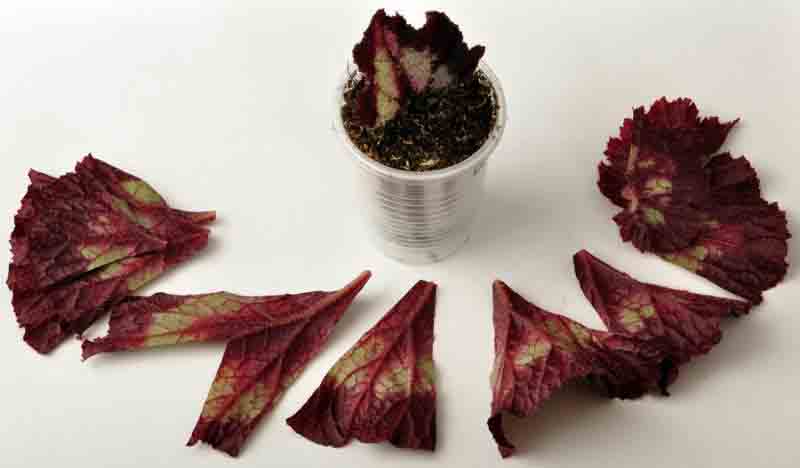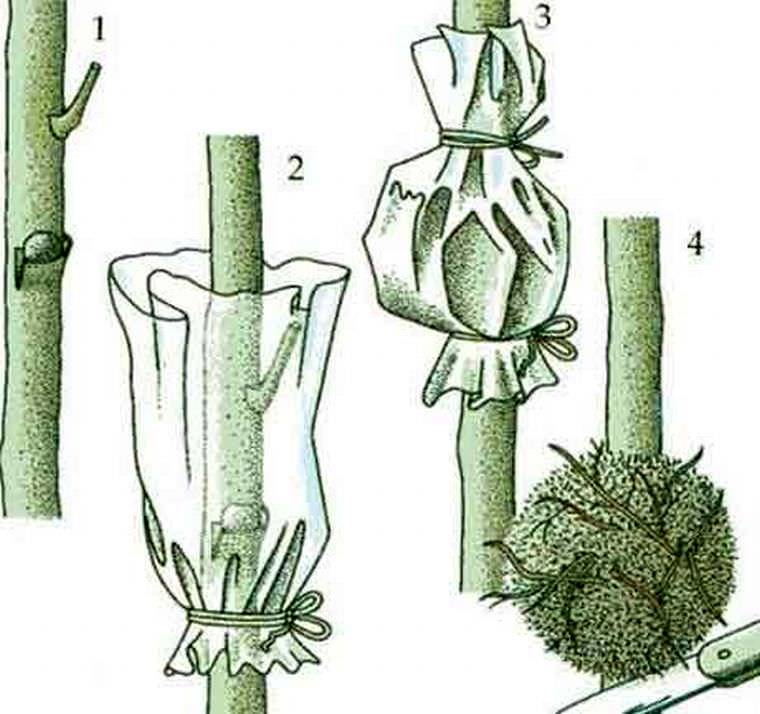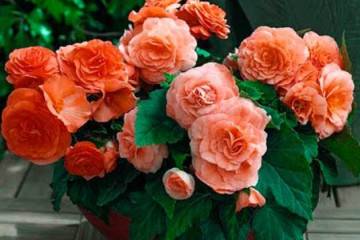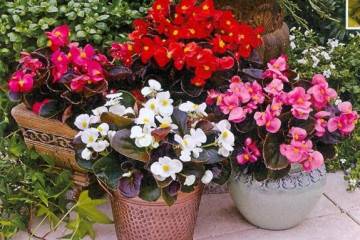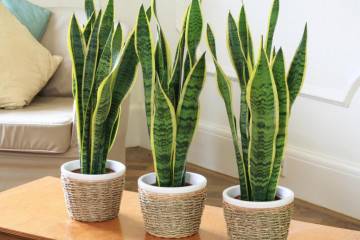Begonia flower - reproduction. The ways
Content:
Begonia is a beautiful flower with many species. It can be both flowering and deciduous-ornamental, so any gardener can choose a favorite option for himself. Not everyone knows how to propagate begonia, so this article provides various types of planting.
Growing from seeds
All flowering begonias can be propagated using a similar method. You can grow a room version of a flower, but this will require a lot of effort, and care at the initial stage is not easy.
Therefore, if you like begonia, seed propagation is not the fastest way to get a flower. It is most commonly used in breeding work because it is tedious enough to be produced at home.
The seeds themselves are small enough. The store-bought variants are covered with a protective shell that helps to increase their size. It contains useful substances that strengthen the plant and protect it from pests.
For landing you need:
- Make a 5 mm drainage layer at the bottom of the container, then fill in the substrate.
- Check that there are no stones or lumps on the surface that will prevent the seeds from growing.
- Moisten the ground with a spray bottle.
- Spread the seeds evenly over the ground.
- Cover the container with glass or polyethylene, place the container in a warm, well-lit place.
Subsequently, watering is required exclusively from a spray bottle. The ground should always be slightly damp. This is partly due to the microclimate created by the lack of fresh air. Otherwise, the seedlings will quickly die and will not please with flowers.
The first shoots should appear in a week. They should be ventilated daily, gradually increasing the time they spend in the fresh air, so that they get used to it. Over time, you should completely remove the cover. The plant can then be grown easily at 18 ° C.
Division of rhizome, begonia bush
Reproduction of tuberous begonia is carried out by dividing its rhizome. For this work, you need to arm yourself with a sharp knife. The bush should be removed from the pot, cut off the long stems, leaves and flower stalks. Subsequently, it is necessary to rinse the roots in water to clear them of excess soil. It is worth cutting the rhizome so that each part has at least one bud, and the cut edges should be sprinkled with charcoal to speed up their healing.
To root more quickly and smoothly, it is worth treating the roots with root or heteroauxin. Subsequently, it is worth planting parts of the rhizome in individual pots, half deepening them into a wet substrate.It is worth covering the container and not opening it until the first leaves appear. When the shoot reaches 7 cm, the tuber can be completely covered with the substrate.
Propagation by cuttings
You can easily reproduce begonias by cuttings at home. Moreover, this procedure is possible with almost any type of plant. The correct technology for cutting a flower will not cause much trouble.
Propagation by leaf cuttings
Some plant species do not have a stem, so the question arises of how you can propagate begonia with a leaf. It is required to cut a healthy leaf from the plant, put it on a hard surface. It is worth taking a sharp blade or knife, cutting the leaf from the median vein to the edges of the triangles so that at least one vein passes through each of them.
Since it is quite difficult to root such a begonia, you can simply put pieces of the leaf on wet sand or try to stick the leaves with a cut of the vein into the soil.
Apical cuttings
In the presence of a bush, it is even easier, since it is faster to grow begonia with an apical cuttings. It is necessary to cut the tops of the plant so that the length of the cutting is 12 cm. It is worth choosing those branches on which there are at least two buds. In this case, the section along which the cutting is cut should be oblique in order to increase the area of root formation. Then you need to pay attention to the preparation of the shoots for reproduction.
Stem cuttings
To propagate a plant, it must have absolutely healthy and strong shoots. Houseplants are best propagated in March. If begonia is outdoors in summer, you can also cut it in the warm season. For better rooting, it is required that the air temperature is 20-25 ° C. At a lower value, roots are less likely to form.
How to prepare cuttings for propagation
Do not forget about preparing the cutting for planting. This will help speed up rooting and provide a more effective result. The plant must go through the following steps:
- Using a sharp knife, it is worth cutting off the apical part, leaving 10 cm in length. A prerequisite is the presence of 2-3 nodes on the branch.
- The lower leaves need to be removed, leaving only 2-3 at the top.
- It takes some time to dry the slices. To do this, you need to leave the cutting alone, and after drying, start rooting.
Plants can be rooted in substrate or water. It is recommended to choose the one that the grower likes best. It is more customary to propagate begonia at home by rooting in water, since this allows you to observe the development of the cutting and the course of the process.
Rooting in water
The cuttings are immersed in a vessel with water at room temperature. Do not use hard or cold for these purposes. It is required to put the vessel with the plant in a bright, but not sunny place with a temperature of at least 18 ° C.
A transparent container will allow you to observe the cut, after the appearance of the first roots, the sprouts can be planted. You can also notice in time if the cut has begun to rot. In this case, it is required to pull the process out of the water, cut off the spoiled place, dry it and put it back in water, preparing it fresh.
The stalk is ready for planting when the root size has reached 2 cm.
Rooting in the substrate
Wet peat, sand, soil for begonias can act as a substrate. The prepared stalk must be dipped into water, then into a product that will facilitate the formation of roots. It is recommended in advance to prepare a small pot, pour pebbles as a drainage, over the substrate, deepen the stalk 2 cm deep.
After the work done, you need to tightly close the pot with a jar, glass or lid. In this case, no part of the plant should touch the walls or lid of the tank in which it is located.
After a while, the container will be covered with perspiration from the inside, which indicates the formation of a microclimate suitable for reproduction. Every day it is worth opening the greenhouse for a few minutes, airing the plant. Gradually it is worth increasing the time the flower stays in the fresh air. When new leaves appear, it is worth removing the lid altogether, since the plant has become entrenched in the soil.
Choosing a rooting vessel
The plant has small roots, so it is worth choosing a low pot of small volume for it. In this case, the substrate will quickly get rid of excess moisture, so it will die less likely. At the same time, during rooting, the plant will not be in the vessel for long; when roots appear, you will need to choose an individual pot.
The pot that will be used after transplanting should not be more than 800 ml in volume, while it is worth making a hole in the bottom so that excess water leaves through it. If the plant becomes cramped in the pot, you will have to choose the larger option. After transplanting, it is recommended to keep the plant for a couple of days in a darker place than usual.
Air layering
It is recommended to choose the method of air layering for plants with long shoots. To get a daughter begonia, it is worth choosing a branch, the length of which has exceeded 20 cm. About 10 cm on this stem should be freed from the leaves, and a circular incision up to 2 mm should be made on it. The incision itself needs to be treated with a rooting activator and wrapped in sphagnum moistened with moss. This place needs to be wrapped with dark plastic, securing its edges.
The roots will appear in about two months. It is required to cut off the shoots and plant them in special soil for begonias. This method should be used if the plant has left the dormant period and began to actively develop.
Further care of seedlings
After it became clear how begonia reproduces, it is worth understanding how to properly care for it. After transplanting the seedlings into separate pots, it becomes easier to care for them. This plant is light-loving, so it is worth placing it in a well-lit room, while protecting it from direct sunlight. It is recommended to choose windows facing east or southwest. The temperature in the room where the flower is located should not fall below 20 ° C.
The substrate should not be constantly wet, so do not be too zealous to water the flower. Also, do not spray the sprouts, since you just need to humidify the air. For these purposes, it is required to put a reservoir of water next to the flower.
With proper care, you can easily grow a young begonia that will delight you with bright flowering. To do this, you just need to choose the appropriate method of reproduction and follow all instructions.

